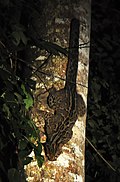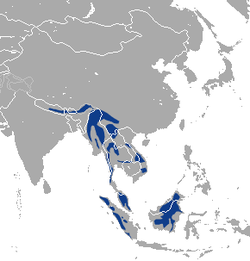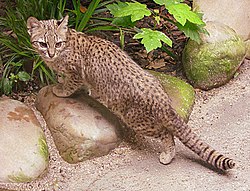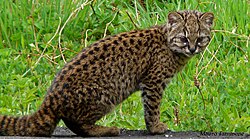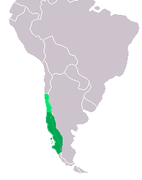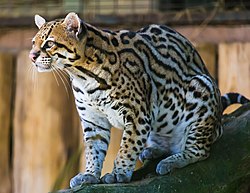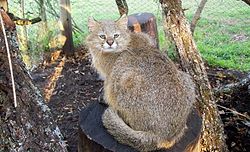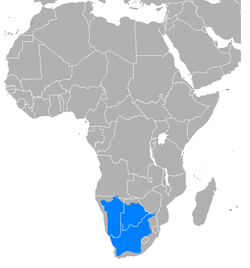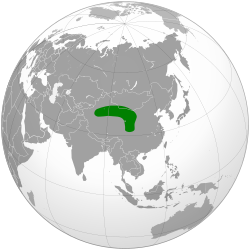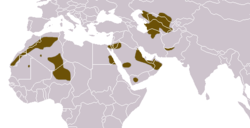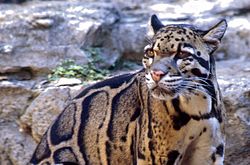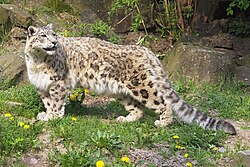

Felidae is a family of mammals in the order Carnivora, colloquially referred to as cats. A member of this family is called a felid. [1] [2] The term "cat" refers both to felids in general and specifically to domestic cats. The characteristic features of cats have evolved to support a carnivorous lifestyle, with adaptations for ambush or stalking and short pursuit hunting. They have slender muscular bodies, strong flexible forelimbs and retractable claws for holding prey, dental and cranial adaptations for a strong bite, and often have characteristic striped or spotted coat patterns for camouflage. [3] [4]
Contents
Felidae comprises two extant subfamilies, the Pantherinae and the Felinae. The former includes the five Panthera species tiger, lion, jaguar, leopard, and snow leopard, as well as the two Neofelis species clouded leopard and Sunda clouded leopard. [2] The subfamily Felinae includes 12 genera and 34 species, such as the bobcat, caracal, cheetah, cougar, ocelot, and common domestic cat. [5]
Traditionally, five subfamilies have been distinguished within the Felidae based on phenotypical features: the Felinae, the Pantherinae, the Acinonychinae (cheetahs), the extinct Machairodontinae, and the extinct Proailurinae. [6] Molecular phylogenetic analysis suggests that living (extant) felids fall into eight lineages (clades). [7] [8] The placement of the cheetah within the Puma lineage invalidates the traditional subfamily Acinonychinae, and recent sources use only two subfamilies for extant genera. [5] The number of accepted species in Felidae has been around 40 since the 18th century, though research, especially modern molecular phylogenetic analysis, has over time adjusted the generally accepted genera as well as the divisions between recognized subspecies, species, and population groups. [9] In addition to the extant species listed here, over 30 fossil genera have been described; these are divided into the subfamilies Felinae, Pantherinae, Proailurinae, and Machairodontinae. This final subfamily includes the genus Smilodon , known as the saber-toothed cat, which went extinct around 10,000 years ago. The earliest known felid genus is Proailurus , part of Proailurinae, which lived approximately 25 million years ago in Eurasia. [10]




